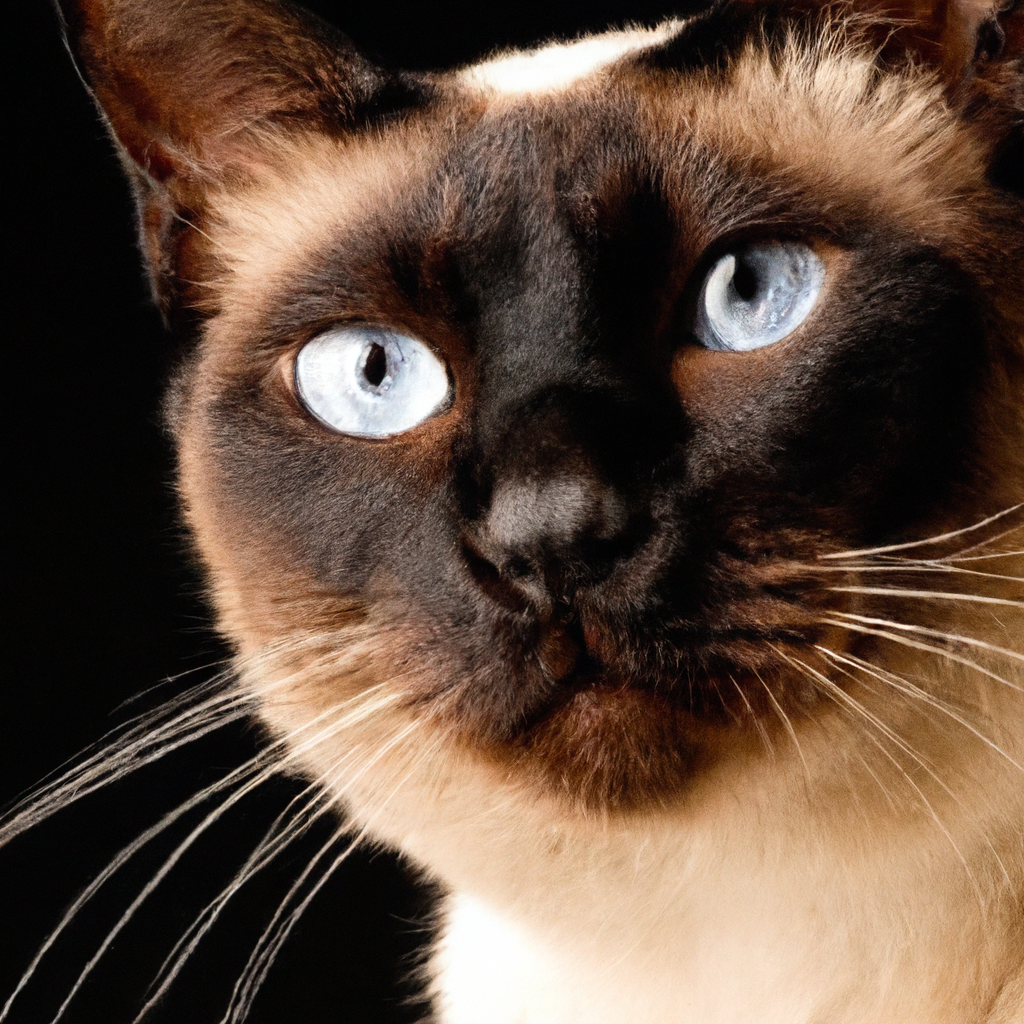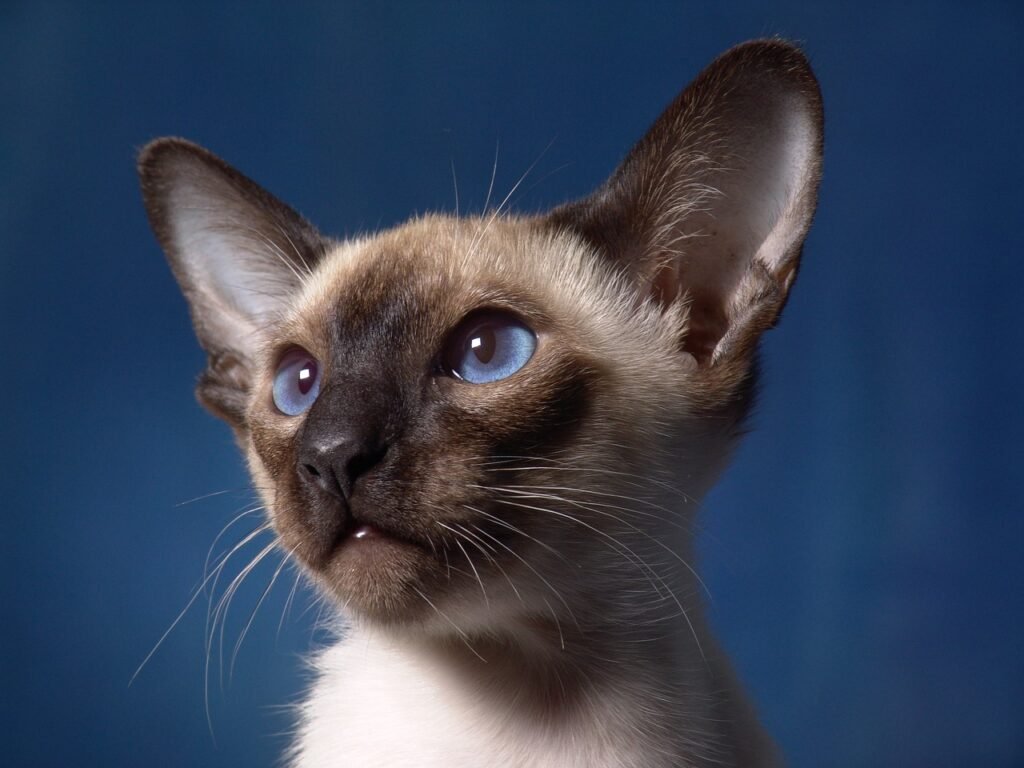Have you ever wondered about the origins of Siamese cats? These elegant and distinctive felines have captured the hearts of many cat lovers around the world. Originating from the ancient kingdom of Siam, now known as Thailand, Siamese cats have a fascinating history that dates back centuries. With their striking blue eyes and sleek bodies, the Siamese cat has become a beloved breed today, but the journey of how they came to be is quite intriguing. Let’s uncover the captivating tale of where Siamese cats truly come from.
History of Siamese Cats
Origin and Early History
Siamese cats have a long and fascinating history that dates back centuries. The exact origin of these beautiful cats is somewhat shrouded in mystery, but it is widely believed that they originated in Siam, which is now known as Thailand. The first recorded mention of Siamese cats can be traced back to a manuscript dating back to the 14th century, known as the “Tamra Maew” or “The Cat Book Poems.
Royal Cats in Siam
Siamese cats were highly revered and held a special place in the hearts of the people of Siam. They were considered to be a symbol of nobility and only the royal family and high-ranking officials were allowed to own them. These regal cats were even tasked with guarding treasures in palaces and temples. The Siamese cats enjoyed a life of luxury, residing in lavish palaces with the royal family and being pampered and adored by those around them.
Introduction to the Western World
Siamese cats first made their way to the Western world courtesy of British diplomats in the 19th century. It is believed that the first Siamese cats were brought to Britain by the British Consul-General in Bangkok, Thailand, and were presented to Queen Victoria as a gift. This event marked the beginning of the Siamese cat’s journey to becoming one of the most beloved cat breeds worldwide.
Characteristics of Siamese Cats
Physical Appearance
Siamese cats are renowned for their distinctive physical appearance. They have a sleek, muscular body and a long, elegant neck. One of their most striking features is their large, pointed ears, which are set quite low on their head. Siamese cats possess a slim and graceful build, making them a truly elegant breed.
Color Points
One of the defining characteristics of Siamese cats is their color points. Their bodies are typically a pale cream or white color, while their extremities, such as their ears, paws, tail, and even their faces, are adorned with darker coloration. This phenomenon is known as “color pointing.” The color points can vary and include seal, blue, chocolate, and lilac.
Eyes and Body Structure
Siamese cats have mesmerizing blue almond-shaped eyes, which are a standout feature and add to their allure. Their eyes are clear and expressive, often described as “deep sapphire blue.” Their body structure is designed for agility and grace, with a long, slim torso and legs that enable them to move with elegance and speed.
Temperament and Personality
Siamese cats are known for their extroverted, sociable, and highly intelligent nature. They are highly vocal and often referred to as the “dogs of the cat world” due to their loyalty and ability to form strong bonds with their human companions. Siamese cats thrive on human interaction and are not particularly well-suited for solitude. They are playful, curious, and enjoy being the center of attention.
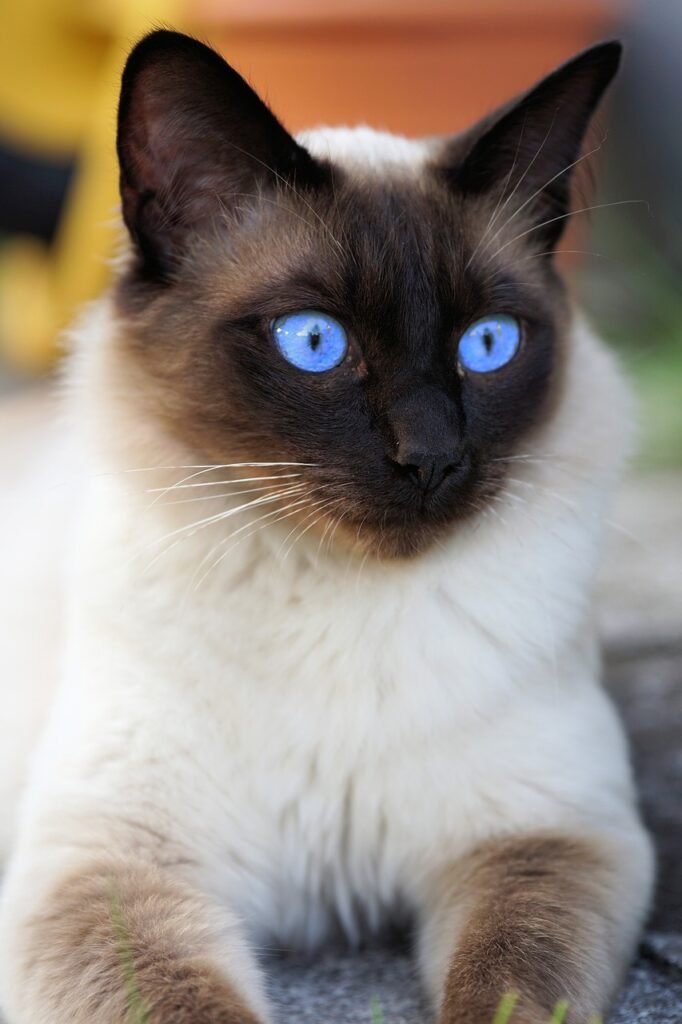

This image is property of pixabay.com.
Siamese Cats in Popular Culture
Movies and Television
Siamese cats have made their mark in popular culture through various movies and television appearances. One notable example is the 1955 Disney film, “Lady and the Tramp,” where Si and Am, two mischievous Siamese cats, play a prominent role as the main antagonists. Their catchy song, “We are Siamese,” has become iconic and synonymous with Siamese cats in popular culture.
Literature and Art
Siamese cats have also been featured in literature and art. The famous mystery novel series, “The Cat Who…” by Lilian Jackson Braun, features Koko, a Siamese cat with a knack for solving crimes. Siamese cats have also been depicted in various paintings and sculptures, capturing their elegance and beauty. They have inspired artists throughout history to immortalize their unique presence.
Breeding and Variations
Traditional Siamese Cats
The original Siamese cats, often referred to as “Traditional Siamese” or “Applehead Siamese,” are the closest representation of the cats that existed in Siam. They have a rounder head shape, fuller cheeks, and a less extreme body type compared to their modern counterparts. The traditional Siamese cats have been cherished by cat enthusiasts who appreciate the breed’s classic features and mild temperament.
Modern Siamese Cats
Modern Siamese cats have undergone significant changes in appearance through selective breeding. They have a more elongated and slender body, with a distinct wedge-shaped head and a sleek, muscular physique. These changes were driven by a desire to enhance the breed’s striking look and emphasize its unique characteristics, such as the deep blue eyes and vivid color points.
Other Variations
In addition to the traditional and modern Siamese cats, there are other variations that have emerged through breeding. These include the “Balinese,” which shares the Siamese’s elegance but with longer fur, and the “Oriental Shorthair,” which retains the Siamese body style but comes in a variety of different coat colors and patterns.
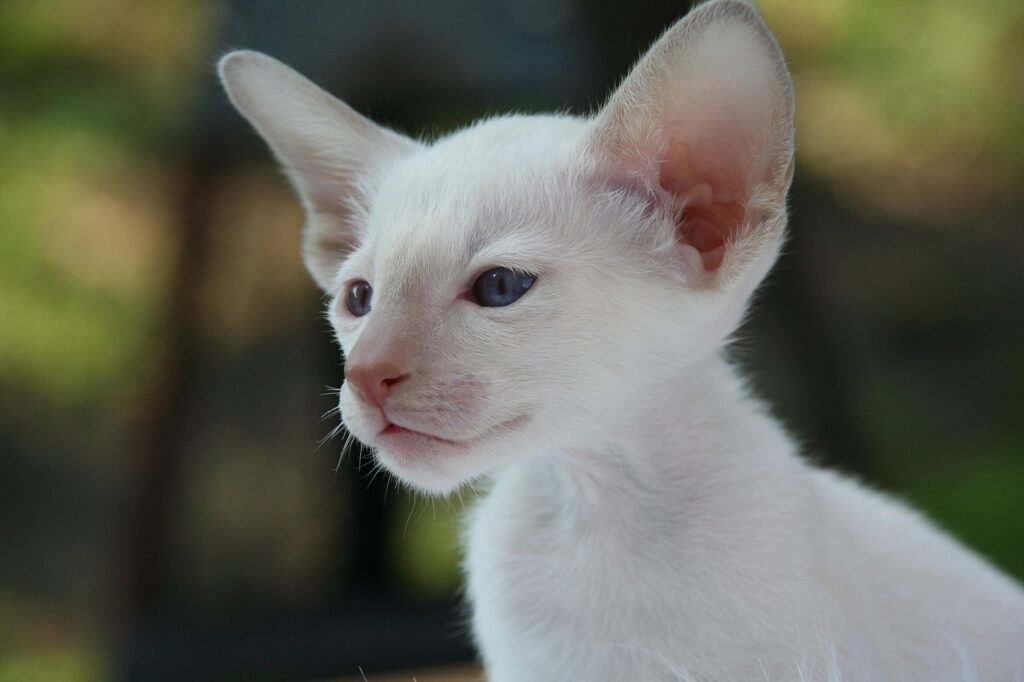

This image is property of pixabay.com.
Health Concerns
Genetic Disorders
Like any other breed, Siamese cats are prone to certain genetic disorders. One of the most common is “kidney disease,” which is often inherited. Siamese cats may also be predisposed to “congenital heart defects” and “liver amyloidosis.” Responsible breeders take necessary precautions to minimize the occurrence of these genetic disorders through genetic testing and proper breeding practices.
Respiratory Conditions
Siamese cats have a reputation for being more prone to respiratory conditions such as “asthma” or “bronchial disease.” Their delicate facial structure, characterized by a flatter face and shorter nose, can contribute to these issues. Ensuring a clean and dust-free environment, as well as regular veterinary check-ups, can help minimize respiratory problems in Siamese cats.
Eye Problems
Siamese cats‘ striking blue eyes can sometimes be susceptible to certain eye problems. “Crossed eyes” or “strabismus” can occur, resulting in a misalignment of the eyes. Siamese cats may also be more prone to developing “nystagmus,” which causes involuntary eye movements. Regular eye examinations and appropriate care can help detect and manage these eye-related concerns.
Siamese Cats as Pets
Suitability as Pets
Siamese cats make wonderful pets for individuals and families who appreciate their unique attributes. As highly social and affectionate cats, they thrive in households where they receive plenty of attention and interaction. Their extroverted nature and intelligence require mental stimulation, making them ideal companions for those who can provide the time and commitment needed to engage with them.
Feeding and Grooming
Proper nutrition is essential for the overall health and well-being of Siamese cats. Feeding them a high-quality diet that meets their nutritional needs helps maintain their beautiful coat, strong bones, and overall vitality. Grooming needs for Siamese cats are relatively low, thanks to their short coat. Regular brushing helps remove loose hair and keeps their coat healthy and shiny.
Exercise and Play
Siamese cats are known for their high energy levels and love for playtime. Providing them with plenty of interactive toys, such as puzzle feeders and feather wands, helps keep them mentally and physically stimulated. Engaging in active play sessions and providing climbing structures or perches can help satisfy their natural instinct to explore and stay active.
Training and Socialization
Siamese cats are highly intelligent and can be trained to perform various tricks and commands, much like dogs. Using positive reinforcement techniques, such as clicker training and treats, can help them learn quickly and enjoy the training process. Early socialization is crucial for Siamese cats to develop proper behavior and adapt well to different environments and situations.
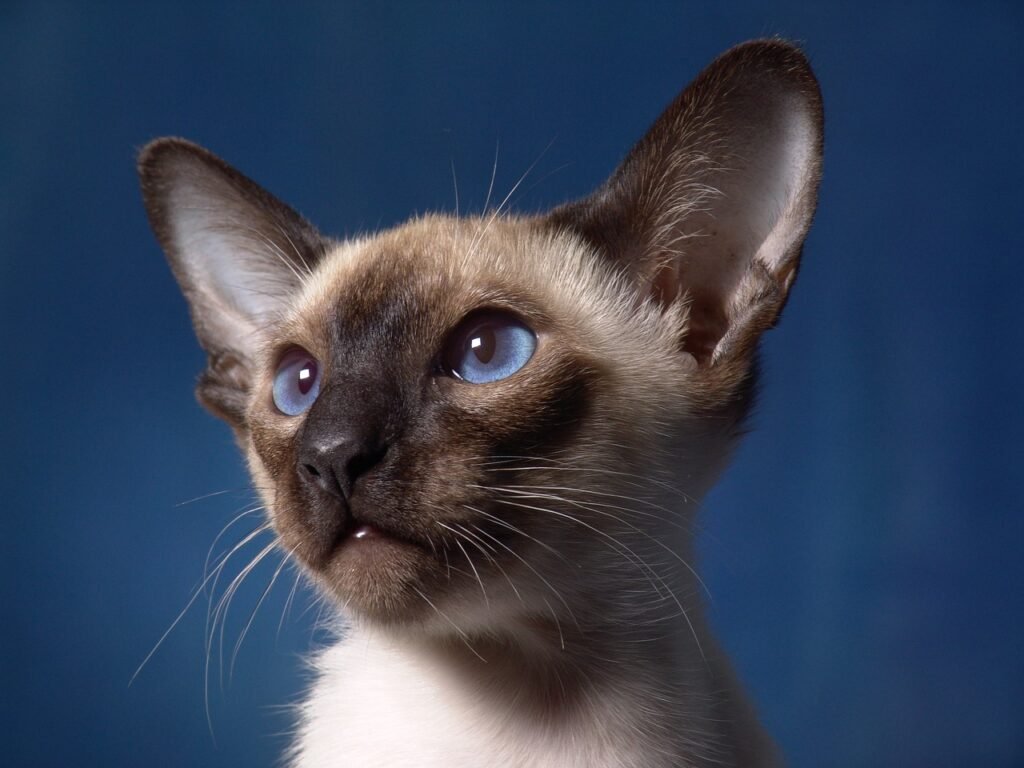

This image is property of pixabay.com.
Siamese Cat Care
Basic Care Needs
Siamese cats require a few basic care needs to ensure their well-being. Providing a clean and comfortable living space that includes a cozy bed, litter box, and scratching post is essential. Regular nail trims help prevent them from becoming too sharp or causing damage to furniture. Keeping their environment free from hazards and providing fresh water at all times are also key aspects of their care.
Nutrition and Diet
Optimum nutrition is vital for Siamese cats to maintain good health and energy levels. Feeding them a balanced diet that is appropriate for their age and activity level is important. Consultation with a veterinarian can help determine the appropriate amount and type of food to meet their specific nutritional needs. It is essential to avoid overfeeding and monitor their weight to prevent obesity.
Grooming and Hygiene
Siamese cats have short, dense coats that are relatively easy to maintain. Regular brushing helps remove loose hair and stimulates blood circulation, promoting a healthy coat. Dental care is also crucial to prevent dental diseases, and regular teeth brushing or providing dental treats can help maintain good oral hygiene. Regular ear cleaning, nail trimming, and bathing when necessary complete their grooming routine.
Healthcare and Vaccinations
Routine veterinary care is essential to keep Siamese cats healthy and prevent potential health issues. Regular check-ups, vaccinations, and appropriate preventive treatments for parasites, such as fleas and worms, are vital. Siamese cats may require specific vaccinations based on the regional prevalence of certain diseases. Establishing a good relationship with a trusted veterinarian ensures proper healthcare for Siamese cats.
Siamese Cats Around the World
Popularity in Different Countries
Siamese cats have gained immense popularity in various countries worldwide. From their origin in Siam (Thailand), they have captured the hearts of people globally. They are highly regarded in the United States, the United Kingdom, Australia, and many other countries. Their distinct appearance, intelligence, and affectionate nature have made them a sought-after breed in the international cat-loving community.
Breeding Associations and Cat Shows
Siamese cats hold a prominent place in cat breeding associations and cat shows around the world. Organizations such as The International Cat Association (TICA) and the Cat Fanciers’ Association (CFA) recognize and exhibit Siamese cats at their prestigious events. It is an opportunity for breeders, enthusiasts, and the general public to appreciate the beauty and uniqueness of Siamese cats and showcase their own prized felines.
Adoption and Rescue
While Siamese cats are popular among breed enthusiasts, there are also opportunities to adopt and rescue Siamese cats in need. There are dedicated rescue organizations and shelters that focus on finding loving homes for Siamese cats that have been abandoned or relinquished. Adopting a Siamese cat provides a chance to offer a forever home to a deserving feline companion.
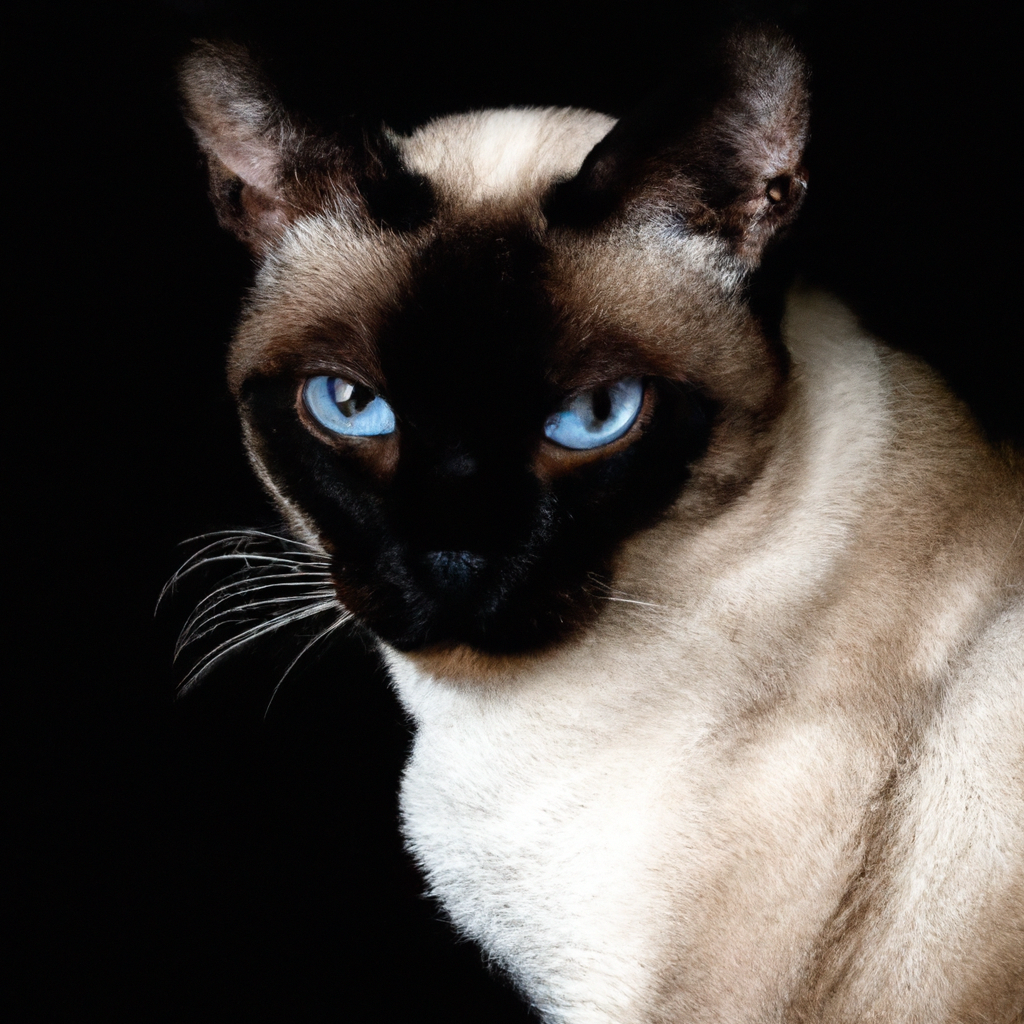

Myths and Legends
Ancient Siamese Cat Legends
Siamese cats have a rich history and are surrounded by various myths and legends. One notable legend claims that Siamese cats were tasked with guarding valuable treasures in ancient Siam. Another legend tells the story of Siamese cats serving as spiritual protectors and bringing good luck to their owners. These captivating tales add intrigue and mystique to the Siamese cat’s captivating reputation.
Supernatural Beliefs and Superstitions
In some cultures, Siamese cats were revered as mystical beings with supernatural abilities. It was believed that they could communicate with spirits and bring good fortune to their owners. Siamese cats were also thought to possess the power to ward off evil spirits and protect the home from negative energy. These beliefs contributed to the reverence and admiration surrounding Siamese cats.
Cultural Significance
Siamese cats have played significant roles in the culture and traditions of their country of origin, Thailand. In Thai folklore and poetry, Siamese cats were often mentioned and celebrated for their beauty and elegance. They were also intricately linked to Thai royalty and held a special place in the heart of the Thai people. Siamese cats continue to be associated with Thai culture and are highly regarded in their homeland.
Siamese Cats in Breeds
Contributions to Other Cat Breeds
Siamese cats have made significant contributions to the development of other cat breeds. Due to their desirable traits and characteristics, they were often used in breeding programs to produce new breeds with distinct appearances and personalities. The Balinese, with its longer fur and similar body structure, is one breed that owes its origin to the Siamese cat. Siamese cats continue to inspire breeders to create new and exciting cat breeds.
Crossbreeding and Hybridization
The distinct physical features and appealing temperament of Siamese cats have made them a preferred choice for crossbreeding and hybridization. Through controlled breeding with other cat breeds, such as the American Shorthair and Russian Blue, breeders have aimed to create unique hybrids that combine the best traits of both breeds. These efforts have resulted in striking and captivating feline companions.
In conclusion, Siamese cats have left an indelible mark on the world of cats. From their regal beginnings as royal cats in Siam to becoming beloved household pets in many countries, they have captivated the hearts of people worldwide. Their stunning physical appearance, playful personalities, and unique traits have made them a breed that continues to be cherished and adored. Whether as pets, show cats, or stars of popular culture, Siamese cats have carved their place in history and continue to be a favorite choice for cat lovers around the globe.
